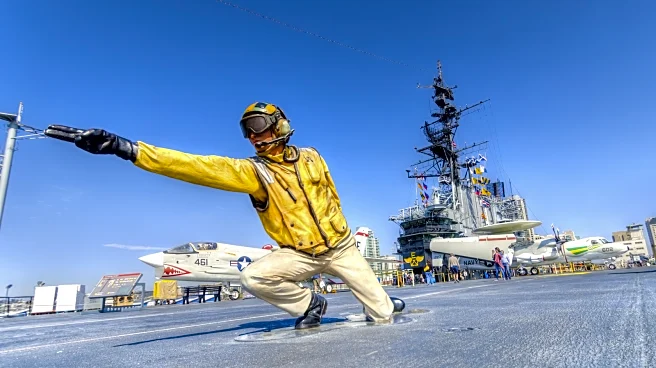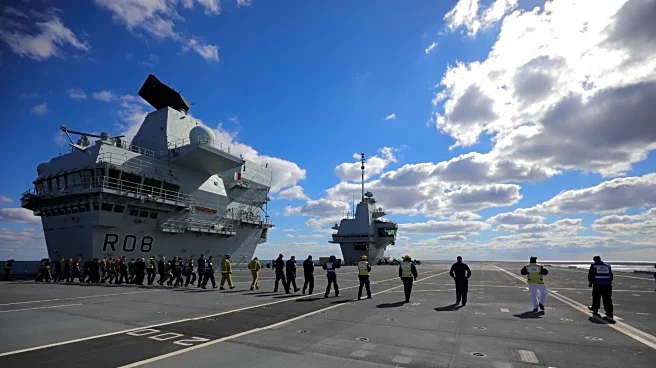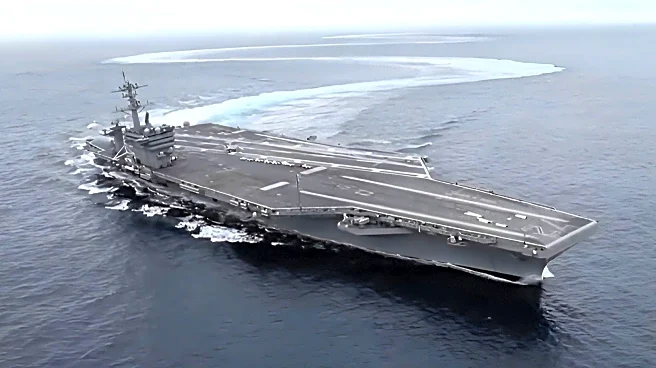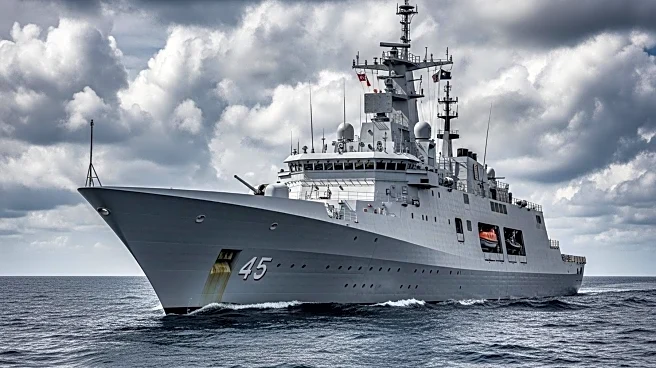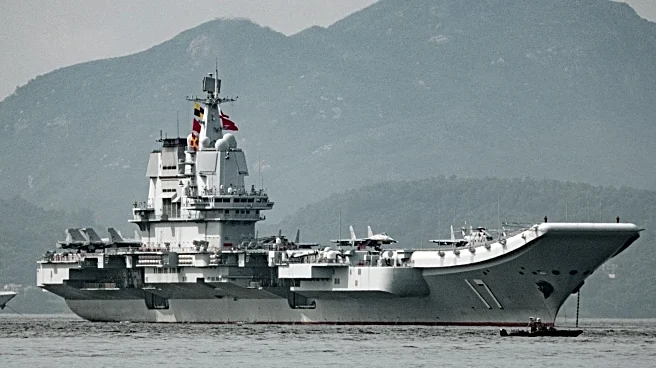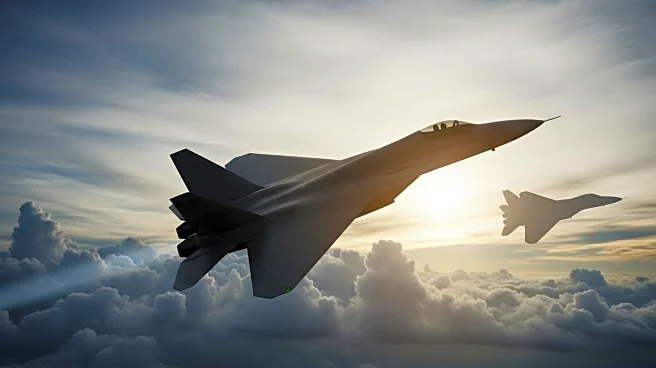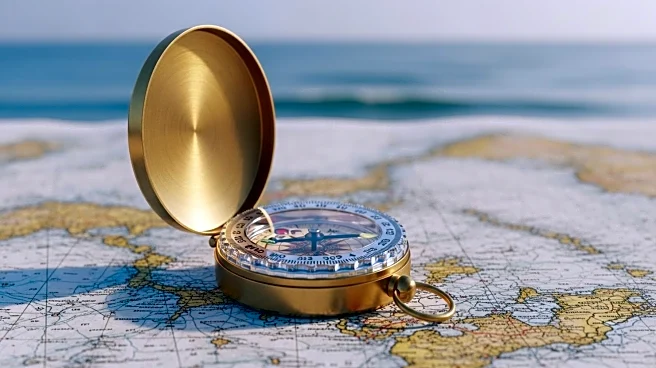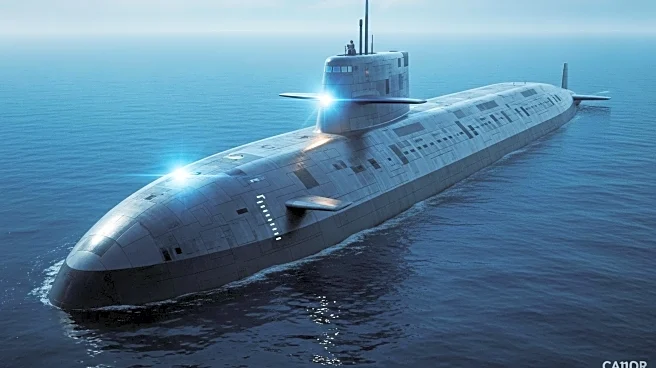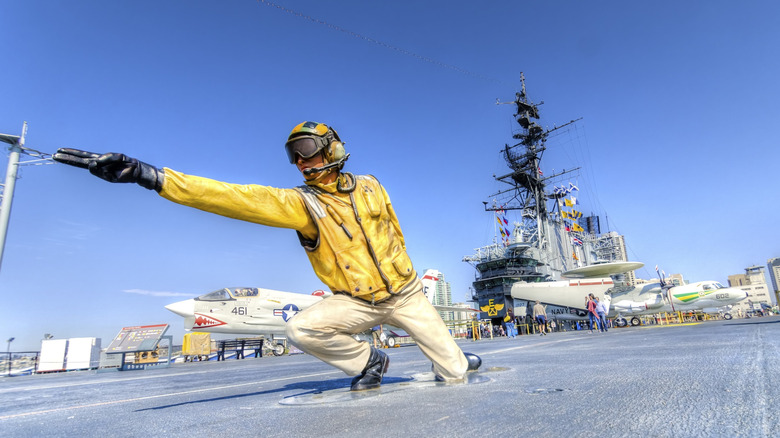
Few civilians are aware of all the interesting facts about aircraft carriers, but these conditions and customs are part of the everyday lives of service members out at sea. These massive vessels sail for extended periods and become a second home to thousands of Navy personnel. Among them is the catapult officer or "shooter," who's responsible for directing the firing of the mechanism which jettisons fighter jets into the sky. At the end of their service, the shooter has a unique way to say farewell.
When either a shooter's tour has ended or another officer is taking command, their boots are sent soaring into the air and then disappear beneath the waves. While the thought of hitching a pair of Navy service boots to a carrier's flight deck catapult and flinging them into the sea might sound strange, it's actually quite a symbolic ceremony. It marks a pivotal moment in their life and career as they prepare to depart the ship a final time.
Read more: 10 Largest Air Forces In The World, Ranked By Military Aircraft Numbers
Why These Rituals Play An Important Role In The Navy
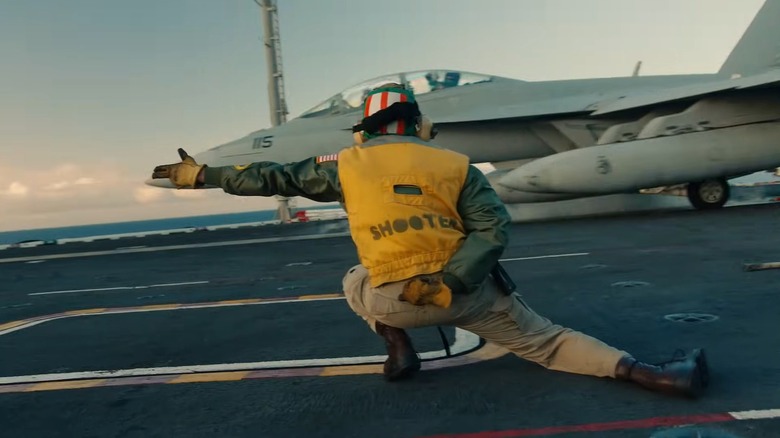
Being a member of the armed services can be a challenging role, filled with on-the-job dangers and extended periods away from family, among other factors. A catapult officer, for example, has the responsibility of being the final say-so in terms of launching multi-million dollar fighter jets into the air. And there is no shortage of these aircraft aboard, as carriers can hold many fighter jets.
You've likely seen catapult officers depicted in movies and real carrier footage, as the individuals standing near the jets who uses hand signals (and lighted batons) to communicate launch procedures. These demanding roles can benefit from lasting traditions, such as the "boot shoot," which help forge camaraderie and pride. It's not clear exactly when outgoing "shooters" started flinging their boots with the catapult, but the steam-powered catapult used today began operating in late 1953. Before that, a hydraulic catapult was used. This means that the odd ritual could potentially date back several generations of Navy catapult officers.
This Isn't The Strangest Custom Among The World's Naval Forces

The "Order of the Blue Nose," has to be one of the most bizarre traditions that navel vessels undertake when crossing the Arctic Circle. The Royal Navy's ceremony involves painting the tip of sailors' noses blue, a dip in frigid water, Viking garb, and a special certificate. The U.S. version is equally strange, involving the crew painting their noses while someone dresses up as the King of the North, demanding the sailors must complete certain challenges.
It might seem odd to commemorate simply crossing latitude line 66°33' N, but the history of sailors and the inhospitable Arctic is fraught with disappearances, deaths, and dangerous expeditions. An icebreaker is much different from other ships but unfortunately didn't appear until 1898. Prior to that, there are countless stories about 19th-century vessels becoming trapped for extended lengths and then mashed apart by the ice. While modern vessels are much more capable and outfitted with cutting-edge navigational equipment, this journey is still considered an accomplishment.
Want the latest in tech and auto trends? Subscribe to our free newsletter for the latest headlines, expert guides, and how-to tips, one email at a time.
Read the original article on SlashGear.
